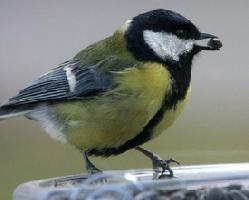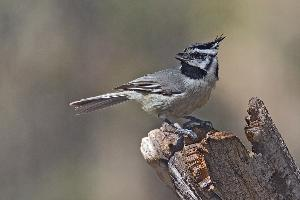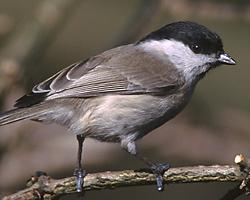
Description de l'animal
The Great tit (Parus major) is a vibrant and adaptable bird that belongs to the tit family, Paridae. It is widely recognized for its striking appearance and melodious song, making it a favorite among birdwatchers and nature enthusiasts. This bird species is prevalent across Europe, parts of North Africa, the Middle East, and Asia, demonstrating its ability to thrive in a variety of habitats.Adult Great tits are easily identifiable by their distinctive coloration and markings. They boast a length of approximately 14 cm (5.5 inches) and have a robust build with a large head and a short, stout bill that is perfect for cracking seeds and capturing insects. The plumage of the Great tit is a mix of bright and muted tones; the upper parts are a greenish-blue, while the underparts are yellow with a striking black stripe running down the center. This central stripe is broader in males, serving as an indicator of their fitness to potential mates. The face features a striking black and white pattern, with white cheeks, a black cap, and a black bib that enhances their expressive appearance.
One of the most remarkable traits of the Great tit is its vocal repertoire. It has a wide range of calls and songs, which can include up to 40 different variations. The most recognizable song resembles a two-syllable phrase, often transcribed as "teacher-teacher" or "see-saw," which is repeated several times. This vocal diversity plays a crucial role in communication, territory defense, and mating rituals.
Great tits are incredibly adaptable when it comes to their diet, feeding on a mix of insects, seeds, and nuts. During the breeding season, their diet consists mainly of insects, providing high protein content essential for the growth of their chicks. In the colder months, seeds and nuts become a vital food source, helping them to survive the winter. This adaptability in diet has allowed Great tits to thrive not only in woodlands but also in gardens and urban areas, where bird feeders often become a regular source of sustenance.
The nesting habits of Great tits are equally versatile. They are cavity nesters, often taking up residence in natural tree holes, but they readily adapt to nest boxes where available. The female is primarily responsible for constructing the nest, using moss, hair, and feathers to create a soft bed for her eggs. She lays between 5 to 12 eggs per clutch, which she incubates for about two weeks. Once hatched, both parents are actively involved in feeding the voracious chicks until they are ready to fledge.
Great tits play a significant role in their ecosystems, not only as part of the food web but also in controlling insect populations, which can be beneficial for agriculture and forest health. Their adaptability and generalist lifestyle have made them a common and resilient species, capable of coping with changing environments. However, like many bird species, they face threats from habitat loss, pollution, and climate change, highlighting the importance of conservation efforts to ensure their continued survival and well-being.
Animaux similaires
Nouvelles photos d'animaux
Top 10 des animaux
- Dolphin gull (Leucophaeus scoresbii)
- Diana monkey (Cercopithecus diana)
- Moustached guenon (Cercopithecus cephus)
- Galápagos tortoise (Geochelone nigra complex)
- Russian tortoise (Testudo horsfieldii)
- Stone loach (Barbatula barbatula)
- Japanese macaque (Macaca fuscata)
- Greek tortoise (Testudo graeca)
- Common flying dragon (Draco volans)
- Vendace (Coregonus albula)


